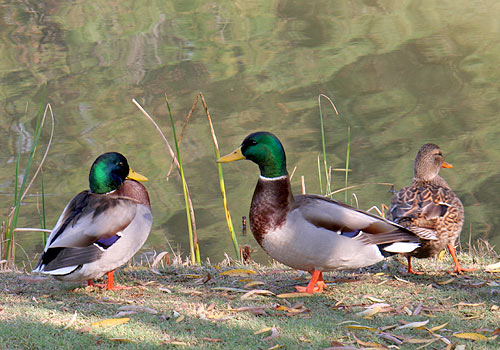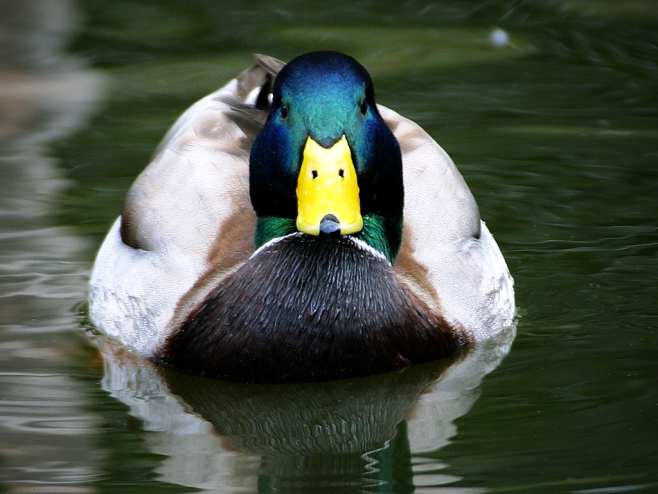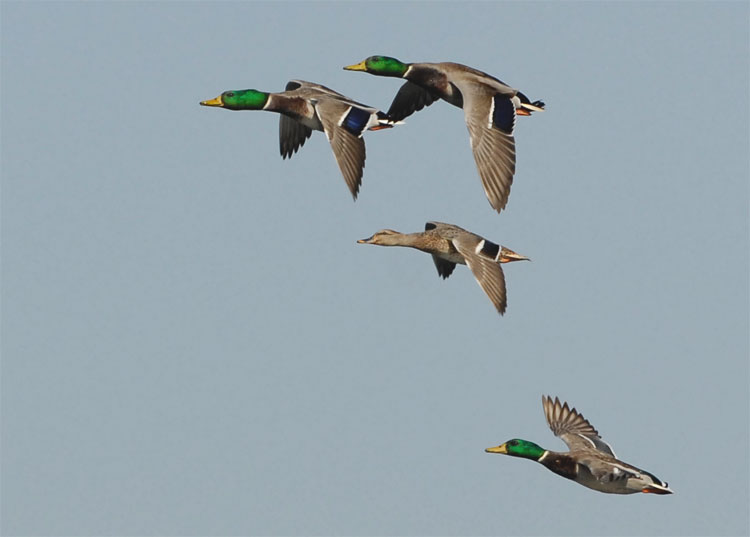 |
The Mallard, or Wild duck Anas platyrhynchos, probably the best-known and most recognizable of all ducks, is a dabbling duck which breeds throughout the temperate and sub-tropical America, Europe, Asia, New Zealand (where it is currently the most common duck species), and Australia. |
|
|
|
| The Mallard is 56–65 cm long, has a wingspan of 81–98 cm, and weighs 0.9–1.2 kg. The breeding male is unmistakable, with a bright green head, black rear end and a yellowish orange (can also contain some red) bill tipped with black (as opposed to the dark brown bill in females). The female Mallard is light brown, like most female dabbling ducks. However, both the female and male Mallards have distinct purple speculum edged with white, prominent in flight or at rest (though temporarily shedded during the annual summer moult). In non-breeding (eclipse) plumage the drake becomes drab, looking more like the female, but still distinguishable by its yellow bill and reddish breast. |
 |
|
|
|
 |
The Mallard inhabits most wetlands, including parks, small ponds and rivers, and usually feeds by dabbling for plant food or grazing; there are reports of it eating frogs. It usually nests on a river bank, but not always near water. It is highly gregarious outside of the breeding season and will form large flocks, which are known as a sord. |
|
|
|
| Canada Geese |